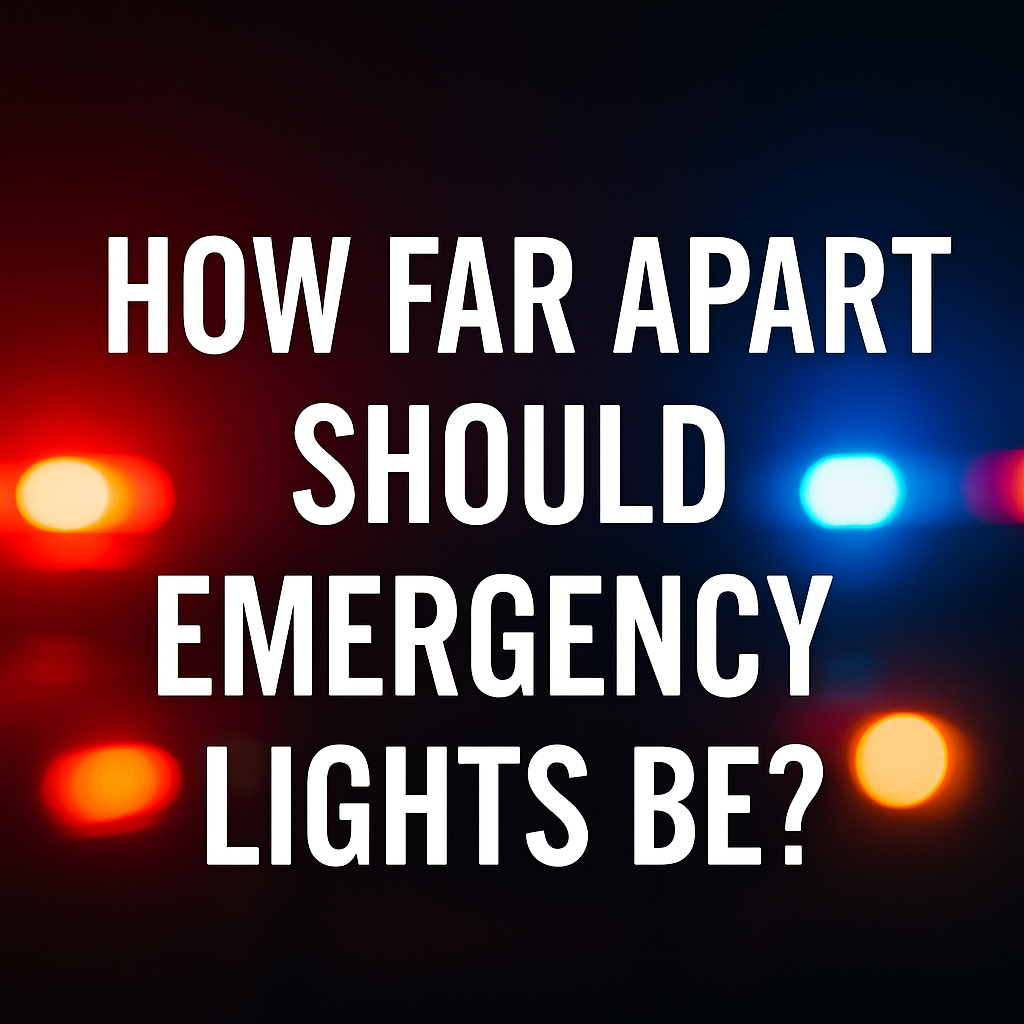When installing emergency lighting in a building, getting the spacing right is crucial for ensuring everyone can safely evacuate during power outages or emergencies. So how far apart should emergency lights be?
The standard spacing for emergency lights is typically 40-50 feet apart in corridors and large spaces, according to most building codes and safety regulations.
While this general rule provides a starting point, the actual spacing requirements can vary significantly based on factors like ceiling height, room layout, and local regulations. Understanding these variations will help you ensure your emergency lighting system fully meets safety requirements and provides adequate illumination when needed most.
Factors That Affect Emergency Light Spacing Requirements
Ceiling height plays a crucial role in determining proper emergency light spacing. For spaces with high ceilings (above 10 feet), lights may need to be placed closer together to ensure adequate illumination at floor level. Generally, for every 3 feet of ceiling height above 10 feet, reduce the standard spacing by about 10%.
Room layout and obstacles also impact spacing requirements. Open spaces may allow for wider spacing, while areas with partitions, corners, or complex layouts require additional lights to eliminate dark spots. Similarly, areas with high-risk features like stairs or elevation changes typically need closer spacing.
How Do Local Building Codes Affect Emergency Light Placement?
Different jurisdictions follow various building codes, with some adopting the International Building Code (IBC) while others maintain their own standards. These codes often specify minimum illumination levels, typically requiring 1 foot-candle (10.8 lux) along evacuation paths and 0.1 foot-candle (1.08 lux) elsewhere.
It's essential to consult local authorities having jurisdiction (AHJ) for specific requirements, as they may have additional guidelines beyond standard codes. Some locations require professional certification of emergency lighting systems, making compliance even more critical.
What About Emergency Lights In Special Areas Like Stairwells?
Stairwells and other critical areas require special consideration for emergency lighting. These locations typically need lights at each landing and intermediate points to ensure safe navigation during emergencies.
For multi-level stairwells, lights should be placed to illuminate both the steps and the landing areas. The standard recommendation is to install emergency lights at every floor level and intermediate landing, regardless of the standard spacing guidelines used elsewhere in the building.
What Is The Required Illumination Time For Emergency Lights?
Emergency lighting systems must maintain adequate illumination for a minimum duration to allow safe evacuation. Most building codes require emergency lights to provide illumination for at least 90 minutes after power failure, giving occupants sufficient time to exit the building safely.
Battery capacity and type play crucial roles in meeting this requirement. Regular testing and maintenance are essential to ensure batteries can sustain the required illumination duration. Monthly quick tests and annual full-duration tests are typically mandated to verify system reliability.
How Often Should Emergency Lights Be Tested And Maintained?
Regular testing is not just recommended—it's required by law in most jurisdictions. Monthly tests involve a quick 30-second check to ensure lights activate when power is cut. These tests can be performed using the test button found on most emergency light units.
Annual testing requires a full 90-minute duration test to verify battery capacity and overall system performance. Keep detailed records of all tests, including dates, results, and any maintenance performed. Failed units should be repaired or replaced immediately to maintain safety compliance.
Additionally, regular maintenance should include cleaning the light fixtures, checking for physical damage, and ensuring all directional signs are clearly visible. Battery replacement typically becomes necessary every 2-4 years, depending on the type of battery and environmental conditions.
Taking The Next Step In Emergency Lighting Safety
Now that you understand the complexities of emergency light spacing and maintenance requirements, the most important action you can take is to schedule a professional assessment of your current emergency lighting system. A qualified contractor can evaluate your specific building layout, measure current illumination levels, and ensure your system complies with all local codes and safety requirements.


